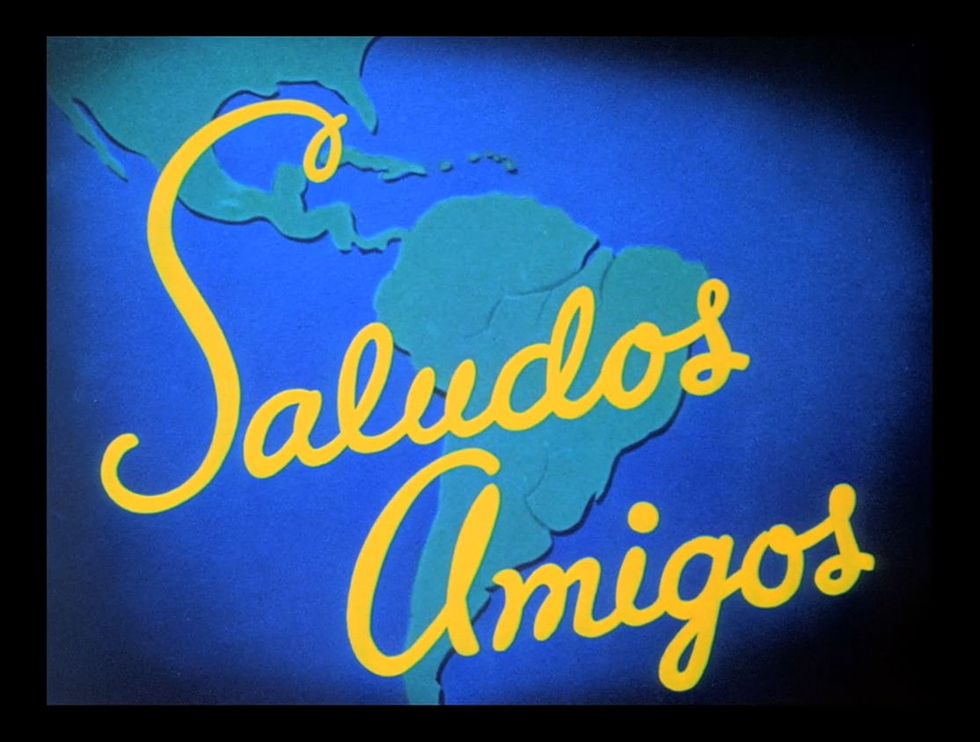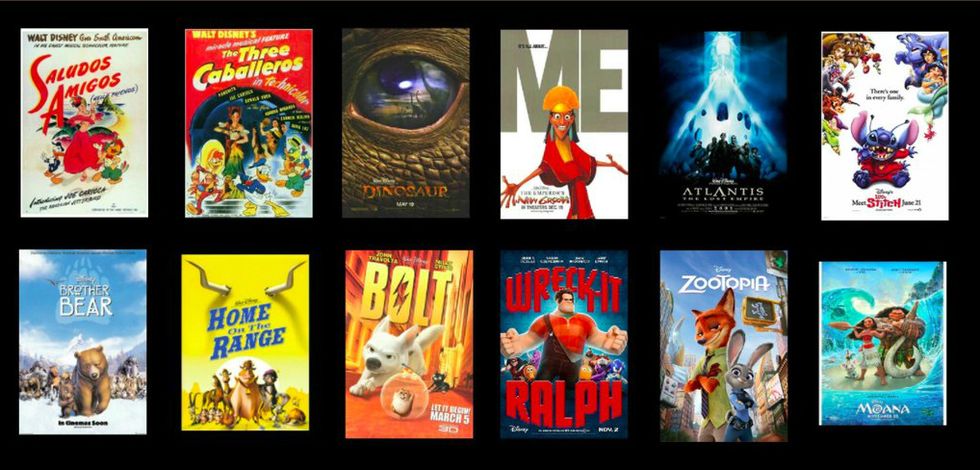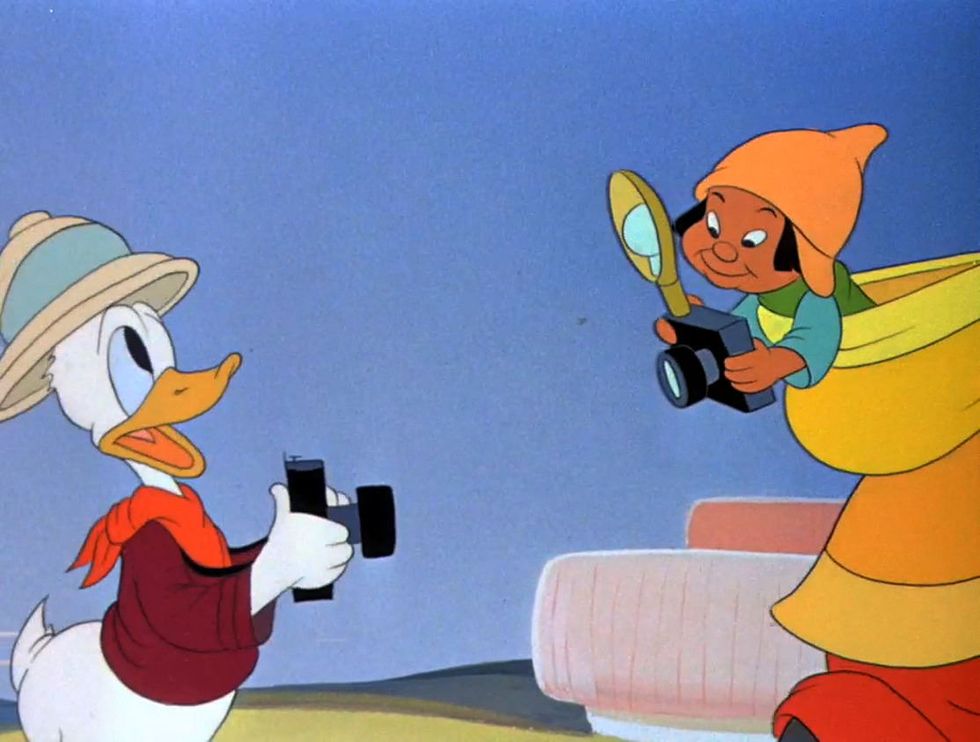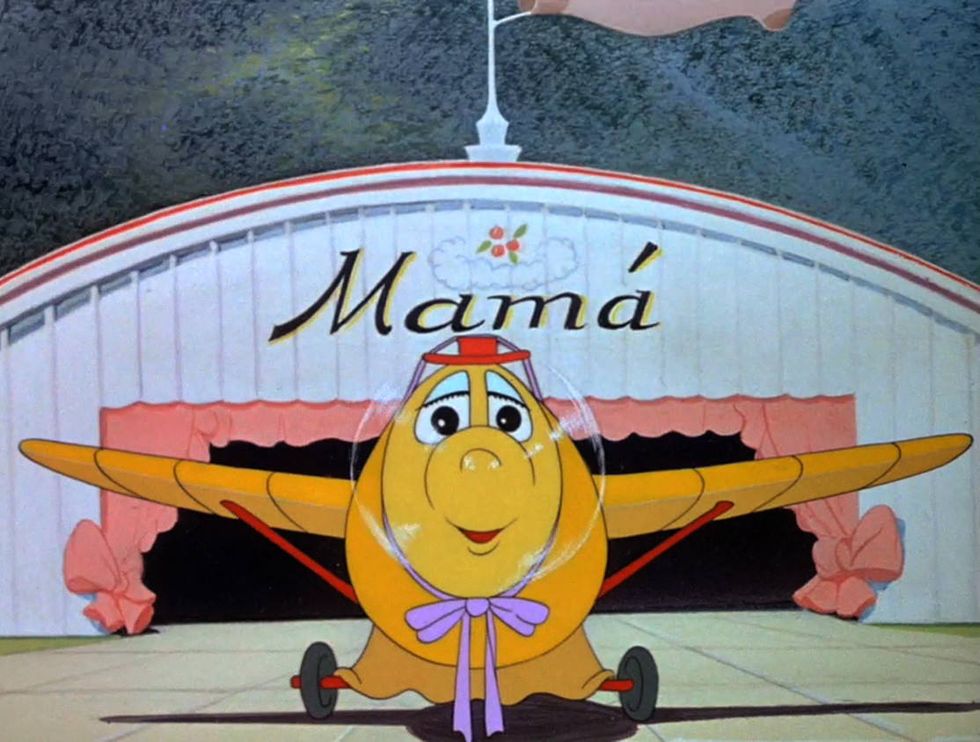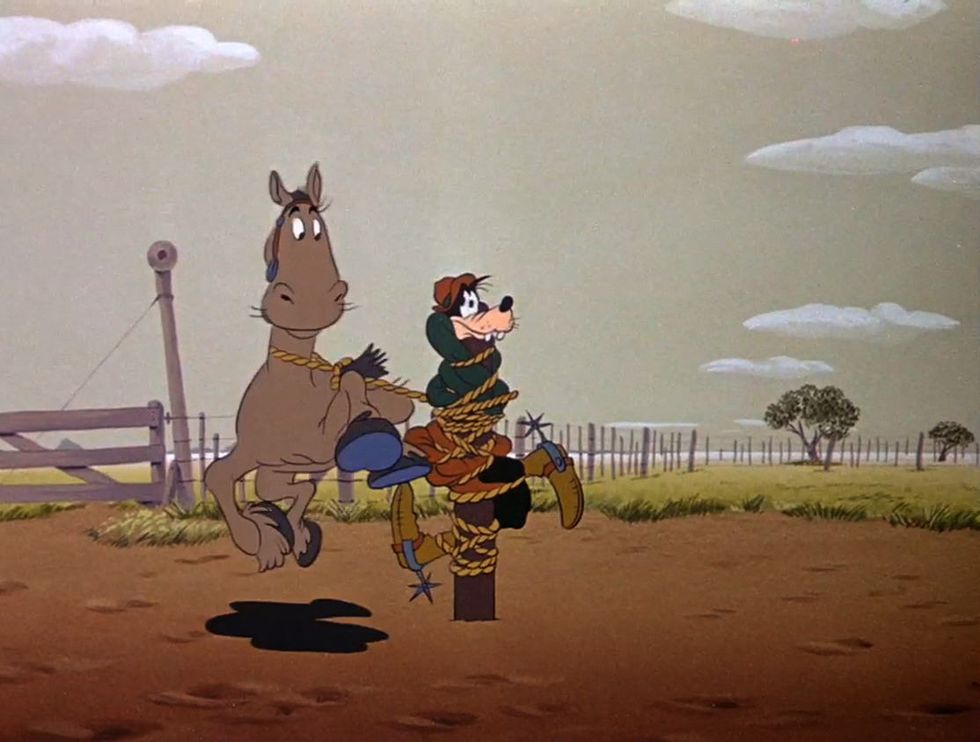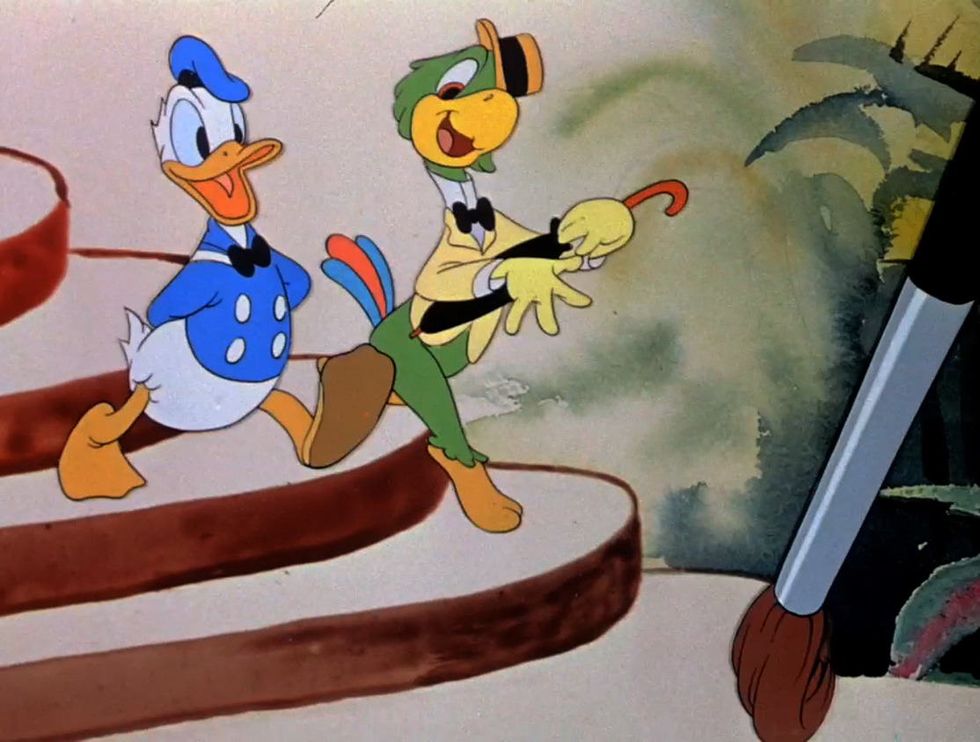We have just under one year until the release of Wreck-It Ralph 2, and I haven't been this excited for a movie since Frozen. But, although I'm used to waiting a few years for movies to come out, a year feels like an eternity right now, especially since it was originally supposed to be released in March 2018.
In any case, I wanted to do something to lead up to it. At first I was going to try to watch every film released from Walt Disney Animation Studios and publish a write-up of one per week, but let's be realistic. I'm a college sophomore. An article a week isn't as practical as it might have been last year, and that's a lot of movies to rewatch in quick succession. So I started thinking of some options that narrowed down the list. I considered doing only their computer-animated movies, or the ones released since the beginning of the Disney Renaissance (in 1989). But the CG movies have little in common to be analyzed, and although the movies released since The Little Mermaid might be useful to show how Disney has evolved in recent years, they're mostly very similar to each other, but vastly different from Wreck-It Ralph. Ultimately, I realized that one of the aspects of Wreck-It Ralph that stood out the most to audiences is the fact that it was an original story, something that Disney had done before, but rarely. Adaptations make up the majority of the Disney canon, but there are also a good amount of original stories worth taking a look at -- twelve in all -- and I'll be writing about one each month until November 2018 to see how well they've fared without source material throughout the years.
All of that being said, all ideas come from somewhere, and it can be tricky to judge which films are original enough to be included in this lineup and which ones are too derivative. So I have a few criteria that they have to meet in order for me to write about them in this series:
- The majority of the main cast has to be original characters created by Disney.
- The movie has to have some kind of linear plot.
- The main plot can't be adapted from a previously existing story (even loosely).
The first film the studio produced that meets those guidelines was 1942's Saludos Amigos, a package film inspired by the animators' government-commissioned trip to South America.
Background
Pinocchio and Fantasia had essentially run the animation studio out of money, having been expensive to produce and returned very little from box office gross. So, for most of the 1940s, they only produced package films -- movies largely without a main story, comprised of several short segments. They filled the studio's entire slate between Bambi (1942) and Cinderella (1950). Saludos Amigos was the first of these, though the shorts were tied together with live-action segments detailing the animators' experiences visiting four South American countries as part of a "goodwill tour" commissioned by the US Department of State as part of FDR's "Good Neighbor Policy," an effort to encourage positive relations between the United States and Latin America. Disney characters were extremely popular in South America, so Walt himself was sent there with his animators to act as an ambassador. What resulted were four beautifully animated segments inspired by the cultures of Peru, Chile, Argentina, and Brazil. It wasn't especially successful at the time, but it was well received and drew the attention of South American audiences.
"Lake Titicaca"
The first short involves Donald Duck visiting a town in Peru bordering on Lake Titicaca, and right off the bat you can see how genuinely respectful this movie is of the cultures and people shown. From a cartoon in the 1940s, you might expect a far more insensitive portrayal, per the crows in Dumbo or the Siamese cats in Lady and the Tramp. But the people in the animated segments are only caricatured to the same extent that white people would have been at the time. Really, the jokes are more at the expense of American tourists (I imagine the animators were taking from their own experiences). Donald is out of his element and surrounded by people who know this place inside and out, but he still has an overconfidence that he can get the hang of their customs quickly, which makes it that much funnier when reality hits him in the face (sometimes literally).
But this is also when you might start to notice how much less cinematic these shorts are in comparison to the feature-length films released before and after the package era. When it comes down to it, this is a Donald Duck short within a longer film, rather than a full film with Donald Duck as a central character. That's not necessarily a flaw, though; if Donald Duck shorts weren't worth watching, he wouldn't be such an enduring character.
"Pedro"
This is definitely the weakest of the four segments, but that's not saying much. It tells the story of a little anthropomorphic mail carrier plane named Pedro. He's a typical plane kid; he goes to plane school and lives with his plane parents, who, of course, adhere to traditional cartoon plane gender roles. As you do. It would be easy to write this off as an old cartoon not thinking too much about its world's logic, if only Pixar wasn't raising the same questions now about how vehicles are supposed to eat, drink, reproduce, or live in general.
Yes, the mama plane wears eyeshadow and mascara. Don't ask why or how. She just does. Also, planes have skeletons in this world. Don't worry about it.
Still, it's a cute short. It plays out like an adaptation of a children's book, as Disney had already done with Ferdinand the Bull in 1938 (long before the days of CGI or John Cena) and would do again with former Disney artist Bill Peet's book Lambert the Sheepish Lion. This particular story, however, was conceived by the studio after their visit to Santiago, Chile, and does boast enough high-quality animation and clever jokes to make it entertaining, especially the commentary from the narrator and the visuals of Mount Aconcagua and the area surrounding it.
"El Gaucho Goofy"
This is another familiar format for Disney, with Goofy acting as an example to educate the audience (sort of). Similar to the "How to" series, in which Goofy stayed mostly silent (due to his original voice actor having left the studio) while being placed into fairly common situations that would still ultimately result in the over-the-top slapstick we've come to expect from him. What's most noteworthy about the series is that they were mostly carries by visual humor, with the action onscreen being in stark contrast to the matter-of-fact narration playing over it. In the early 2010s, Disney Channel would try to make them more palatable to young audiences with their "Have a Laugh" interstitials, but that was done through narration that tried to use more modern humor, but really was just explaining the jokes happening onscreen. It was unnecessary and undermined what made the shorts funny to begin with, but luckily we still have the originals available. The short created for Saludos Amigos centers around the similarities between the American cowboy and the Argentine gaucho. Its visuals are just as funny as the standalone shorts, but a high point of this one in particular is the scene transitions, which the characters directly interact with in clever ways, such as a screen wipe knocking Goofy over and pushing him out of the frame. There's also a clever bit involving slowed down and sped up action. As with all of the "How to" shorts, it's fairly accurate to its subject matter, it just takes its humor from the exaggeration of it. Again, it's done with a high level of respect for the culture, as I'm sure they respected the institutions of baseball and football.
They were wrong to respect golf, though. Contrary to the opening narration in that short, it is absolutely a waste of time.
"Aquarela do Brasil"
They absolutely saved the best segment for last. Most of it is set to the song of the same name, which has become one of the most famous Brazilian songs ever written (you may know it from the movie Brazil or the trailer for WALL・E). The title translates from Portuguese to "Watercolor of Brazil," which is taken literally by the animators. The environment is created onscreen by a paintbrush that drops color onto a canvas. This sequence is reminiscent of Fantasia with its surreal imagery, often involving transformations -- blue paint into a waterfall, flowers into flamingos, a tree into a bird, a bunch of bananas into a flock of toucans, etc.
The second half keeps the same clever visual techniques, but it's also where the comedy comes in. Donald comes back, this time exploring Rio de Janeiro, and is introduced to José Carioca (voiced by Brazilian musician José Oliveira). What ensues is a musical sequence that takes full advantage of the medium of animation. As José teaches Donald about samba, the music starts up again and things like hats and umbrellas become musical instruments. While they walk throughout a more minimalist version of Rio, the offscreen painter returns and creates their surroundings as they enter them.
This segment, as well as the entire film, ends with the two going out to dance at the Copacabana, and while it's an abrupt ending for the movie itself, it at least concludes on a high note.
Final Thoughts
At only a little over forty minutes long, this is the shortest film in Disney's animated canon, but its runtime is filled with beautiful and creative visuals and humor that mostly still holds up today. If it were to be released in the 21st century, it would probably be sent directly to home video or aired as a television special, but at the time, cinema was still the only real outlet for animated works. The shorts aren't tied together particularly well, but they're all worth watching, if only for the bright colors and excellent animation. The live action segments are also interesting, giving detailed background to what we're about to see, as well as showing concept and production art created on the trip throughout these four countries. Overall, it's not a masterpiece on the same level as Fantasia or Bambi, but it's entertaining, educational, and a good look into how history and politics have affected film over the better part of the last century.

